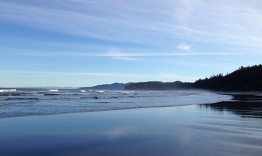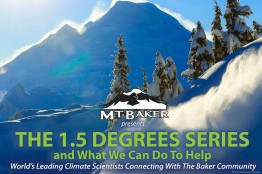What some have called the “Godzilla El Niño” is now lumbering ashore, right on schedule. El Niño tends to influence North American weather after the first of January, and indeed, we’re seeing warm temperatures in Alaska and much-needed rain in California. University of Washington researchers are tracking what the season will deliver to the Pacific Northwest region. For Washington, El Niño typically brings warm, and often dry, winter weather.
Read more at UW Today »West Coast study emphasizes challenges faced by marine organisms exposed to global change
The Pacific Ocean along the West Coast serves as a model for how other areas of the ocean could respond in coming decades as the climate warms and emission of greenhouse gases like carbon dioxide increases. This region—the coastal ocean stretching from British Columbia to Mexico—provides an early warning signal of what to expect as ocean acidification continues and as low-oxygen zones expand.
Read more at UW Today »A reflection on a life well lived—Doug Walker
Dean Lisa J. Graumlich reflects on the many contributions of Doug Walker, a philanthropist, champion of nature and people, and friend.
Read more »UW climate scientists to give free talks at Mt. Baker ski area
After a day enjoying the powdery snow on the slopes east of Bellingham, skiers can sit down with fondue and hear about the future of our region under climate change. The University of Washington and Mt. Baker Ski Area are collaborating this month to present “The 1.5 Degrees Series, and What We Can Do to Help.” The free 20-minute talks by UW faculty members will take place three consecutive Saturdays at 3:30 p.m.
Read more at UW Today »Rivers, lakes impact ability of forests to store carbon
Forests help remove carbon dioxide from the atmosphere by storing it in trees, but a sizable amount of the greenhouse gas actually escapes through the soil and into rivers and streams. That’s the main finding of a paper to appear Monday in the Proceedings of the National Academy of Sciences. It’s the first study to comprehensively look at how carbon moves in freshwater across the entire U.S.
Read more at UW Today »





